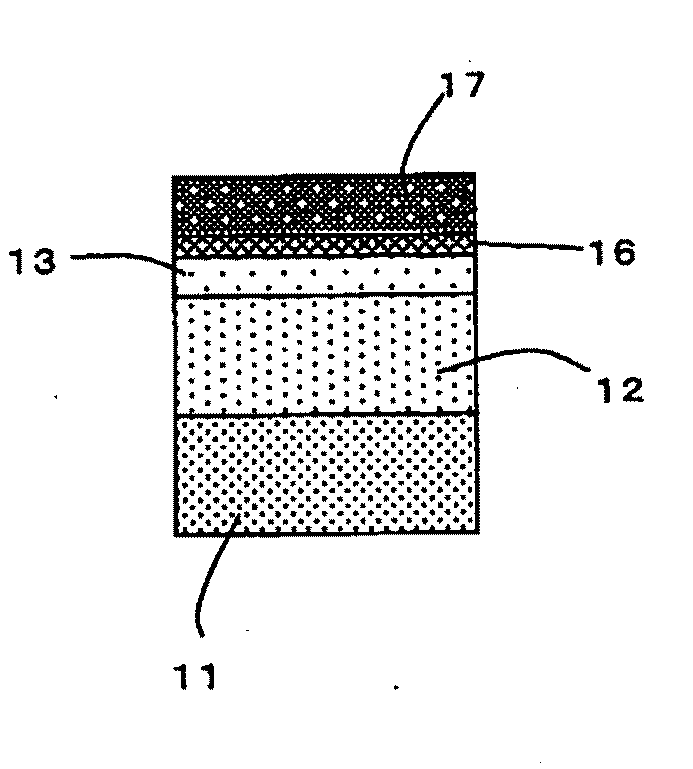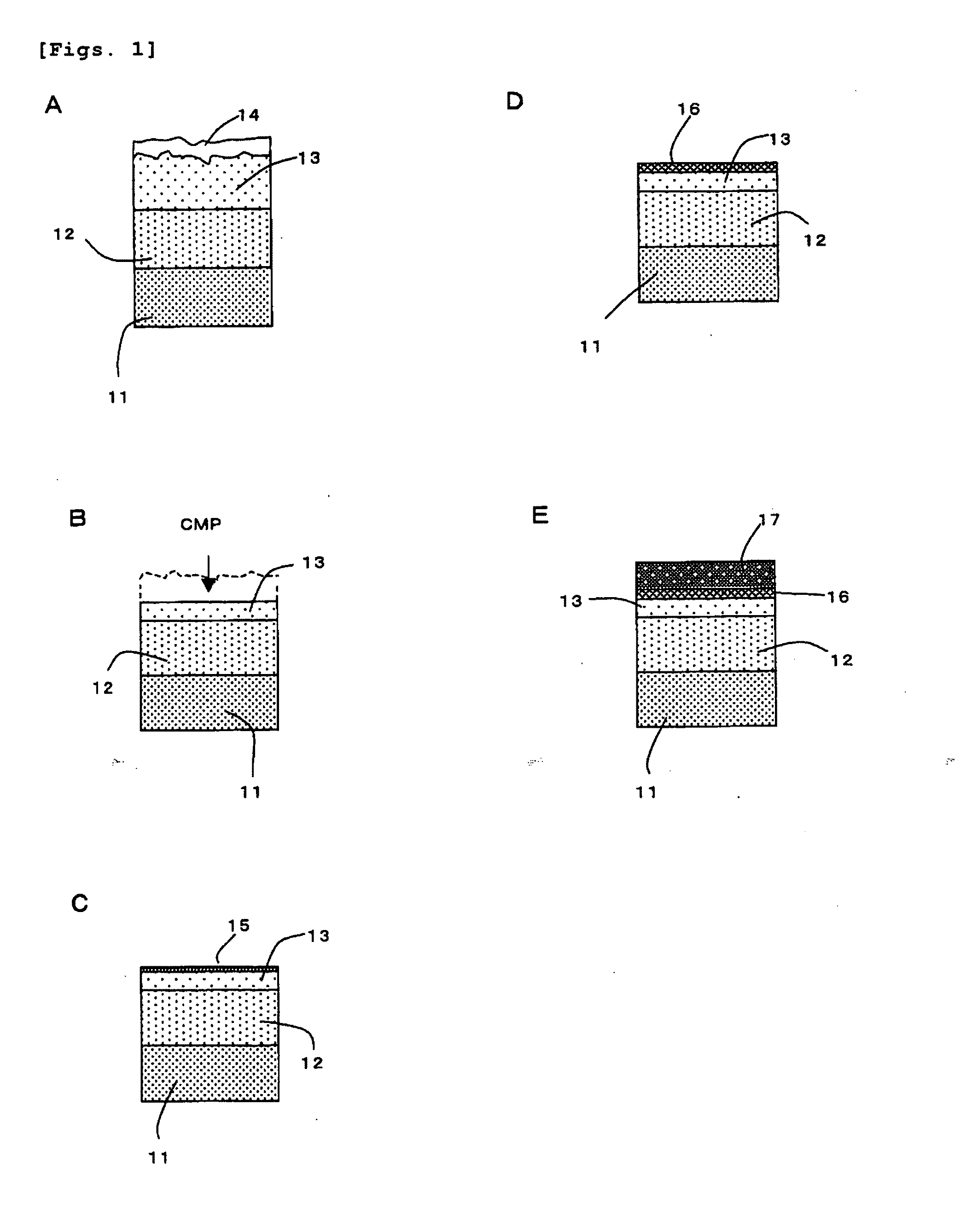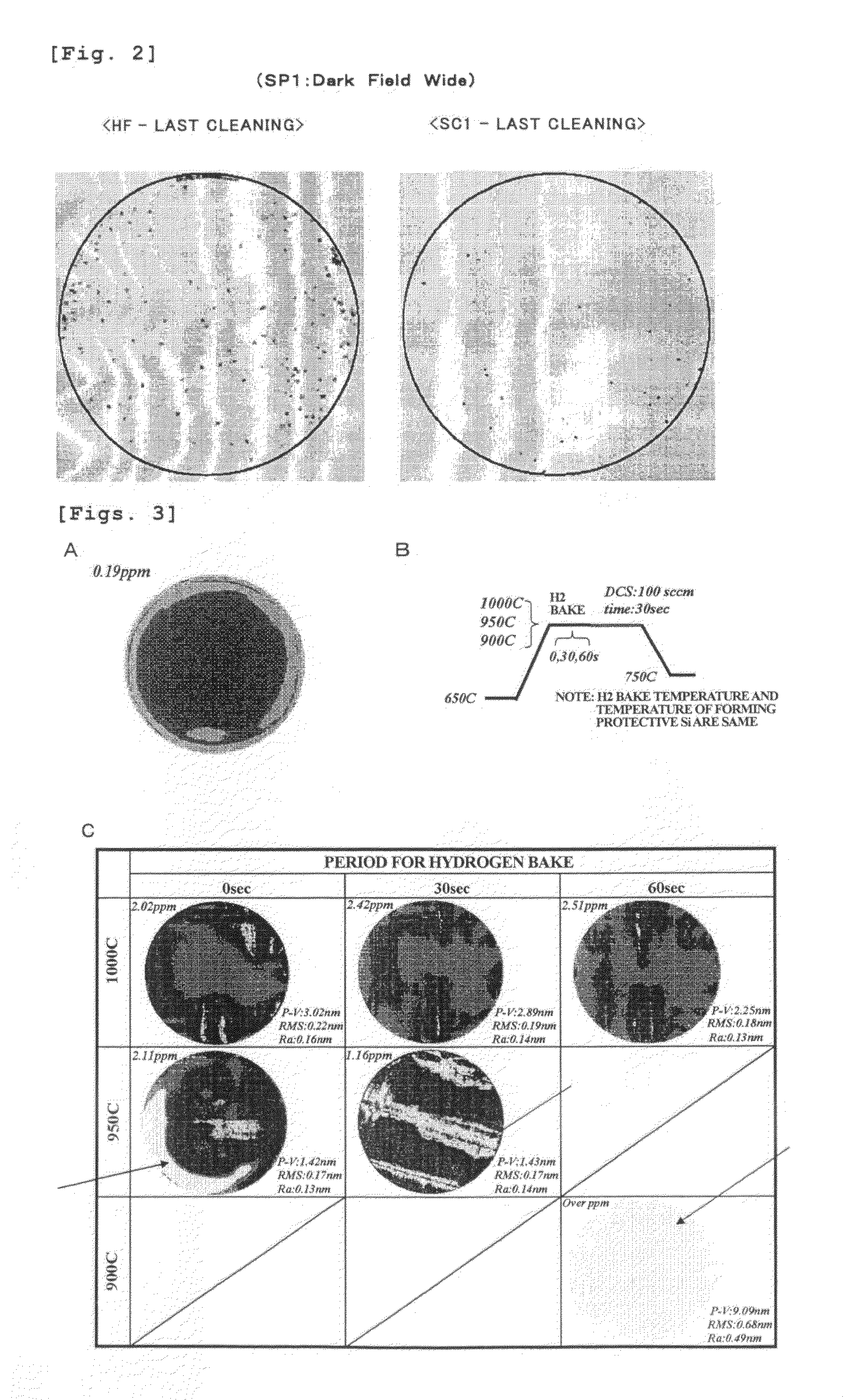Manufacturing method of strained si substrate
a technology manufacturing method, which is applied in the direction of polycrystalline material growth, chemically reactive gas growth, crystal growth process, etc., can solve the problems of increasing the density of threading dislocation, deteriorating surface roughness, and not obtaining a sufficient high quality of strained si substrate, etc., to achieve low threading dislocation density, high quality, and high quality
- Summary
- Abstract
- Description
- Claims
- Application Information
AI Technical Summary
Benefits of technology
Problems solved by technology
Method used
Image
Examples
experimental example 1
[0062]As the last cleaning step of a wafer surface for the semiconductor substrate after the CMP, HF finishing and SC1 finishing were compared (See FIG. 2).
1) The above-mentioned semiconductor substrate was subjected to SC1 cleaning in a mixed liquid of NH4OH:H2O2:H2O=1:1:5, DHF (5%) cleaning, and spin-drying at 76° C., and then was measured with respect to its particle level on the wafer surface by a particle measuring instrument (SP1, manufactured by KLA-Tencor Corporation) in a Dark Field Wide mode (See FIG. 2, left-hand side).
2) The above-mentioned semiconductor substrate was subjected to SC1 cleaning in a mixed liquid of NH4OH:H2O2:H2O=1:1:5, and spin-drying at 76° C., and then was measured with respect to its particle level on the wafer surface by a particle measuring instrument (SP1) in a Dark Field Wide mode (See FIG. 2, right-hand side).
[0063]As is also apparent from FIG. 2, when the wafer cleaning was finished with HF, particles were very easy to be attached.
experimental example 2
[0064]With respect to the semiconductor substrate which was subjected to the above-mentioned CMP and to SC1-cleaning under conditions of the above-mentioned Experimental Example 1 as the last cleaning process of the wafer (as shown in FIG. 1C), H2 bake was performed using a CVD device of single wafer processing type for the purpose of removing native oxide film 15 formed in the SC1 cleaning, under a reduced pressure at each of the below-mentioned temperatures for each of the below-mentioned time periods so as to examine the optimal conditions.
[0065]Under a reduced pressure of 80 torr (about 11 kPa), the H2 bake temperature was raised from 650° C. to 900° C., 950° C. and 1000° C., respectively, and for each temperature case, H2 bake processing was performed for a constant time period (0 second, 30 seconds and 60 seconds), respectively, and then the reaction using DCS (100 sccm) was performed at the same temperature as that for the H2 bake for 30 seconds so as to form a protective Si ...
examples 1 and 2
, and Comparative Examples 1 and 2
[0073]In Examples 1 and 2 shown in FIG. 4C, immediately after H2 bake, a protective Si layer 16 was formed with a thickness of 5 nm, then the temperature was lowered to 800° C. or 650° C. which was a temperature for growing a strained Si, and then a strained Si layer 17 was epitaxially grown with a thickness of 70 nm. In Comparative Examples 1 and 2, after H2 bake, still in H2 atmosphere, the temperature was lowered to 800° C. or 650° C. which was a temperature for growing a strained Si, and then a strained Si layer 17 was epitaxially grown with the thickness of 70 nm. Haze level under each condition was measured.
[0074]As a reference, FIG. 4A shows a haze level on a wafer surface before H2 bake (0.19 ppm). FIG. 4B shows recipe of the above-mentioned reaction, and it shows specifically that a wafer was inserted into a CVD device at 650° C., that temperature was raised to 1000° C. in a hydrogen atmosphere, that immediately DCS was flowed for three sec...
PUM
| Property | Measurement | Unit |
|---|---|---|
| temperature | aaaaa | aaaaa |
| thickness | aaaaa | aaaaa |
| surface roughness | aaaaa | aaaaa |
Abstract
Description
Claims
Application Information
 Login to View More
Login to View More - R&D
- Intellectual Property
- Life Sciences
- Materials
- Tech Scout
- Unparalleled Data Quality
- Higher Quality Content
- 60% Fewer Hallucinations
Browse by: Latest US Patents, China's latest patents, Technical Efficacy Thesaurus, Application Domain, Technology Topic, Popular Technical Reports.
© 2025 PatSnap. All rights reserved.Legal|Privacy policy|Modern Slavery Act Transparency Statement|Sitemap|About US| Contact US: help@patsnap.com



